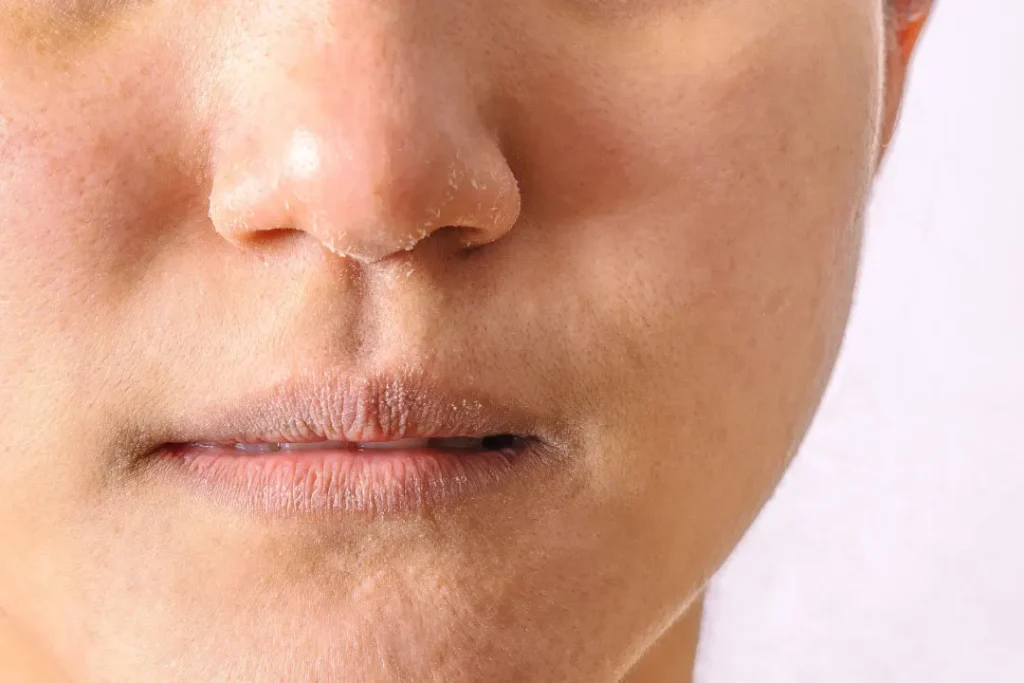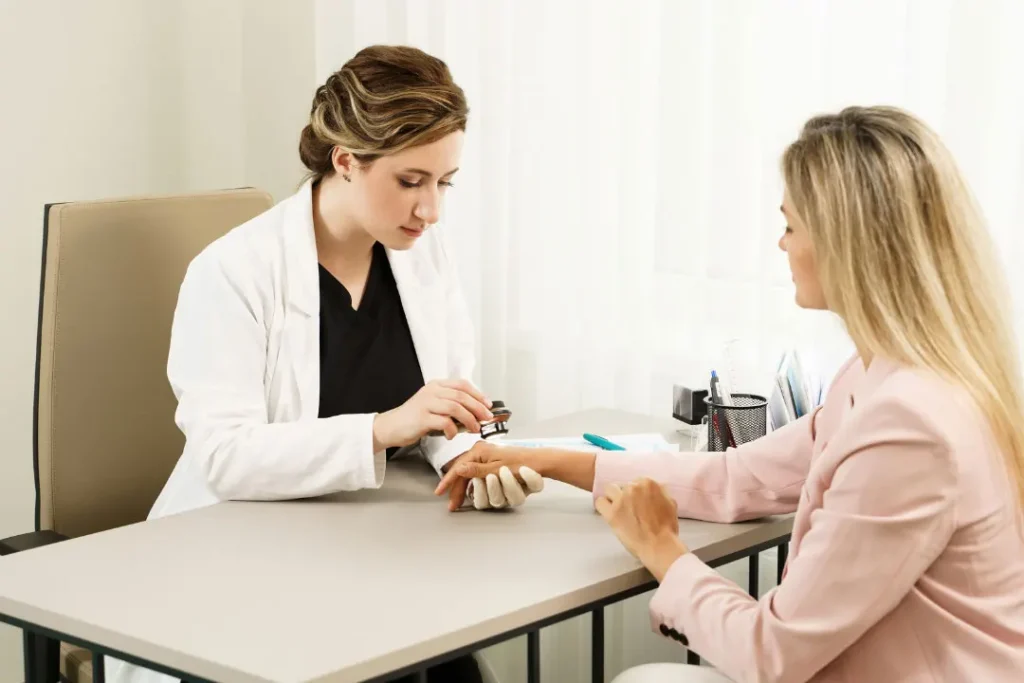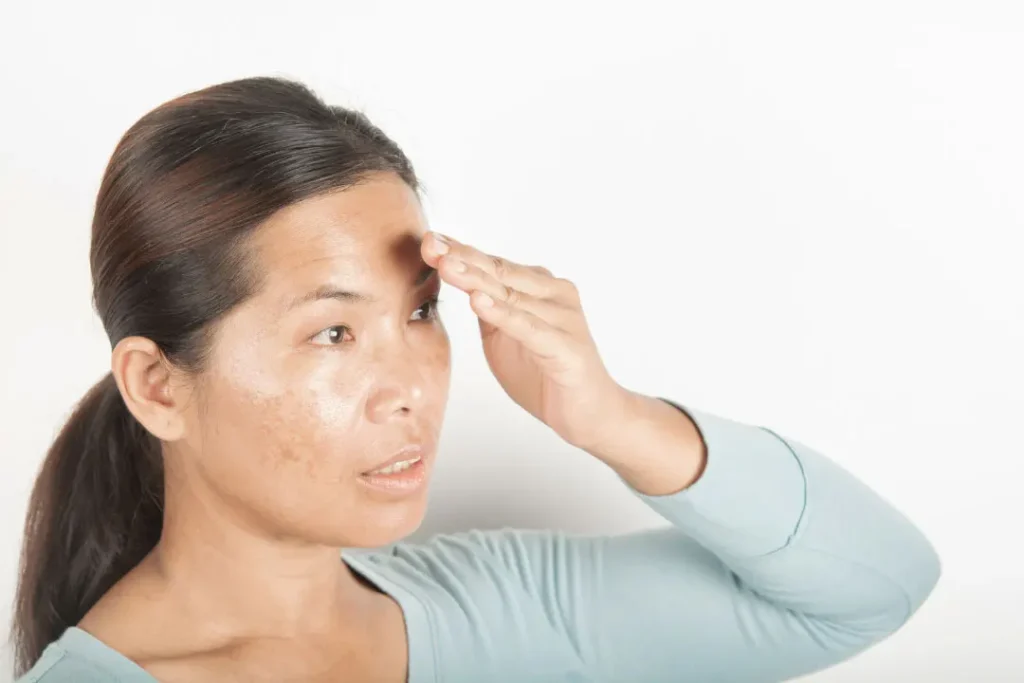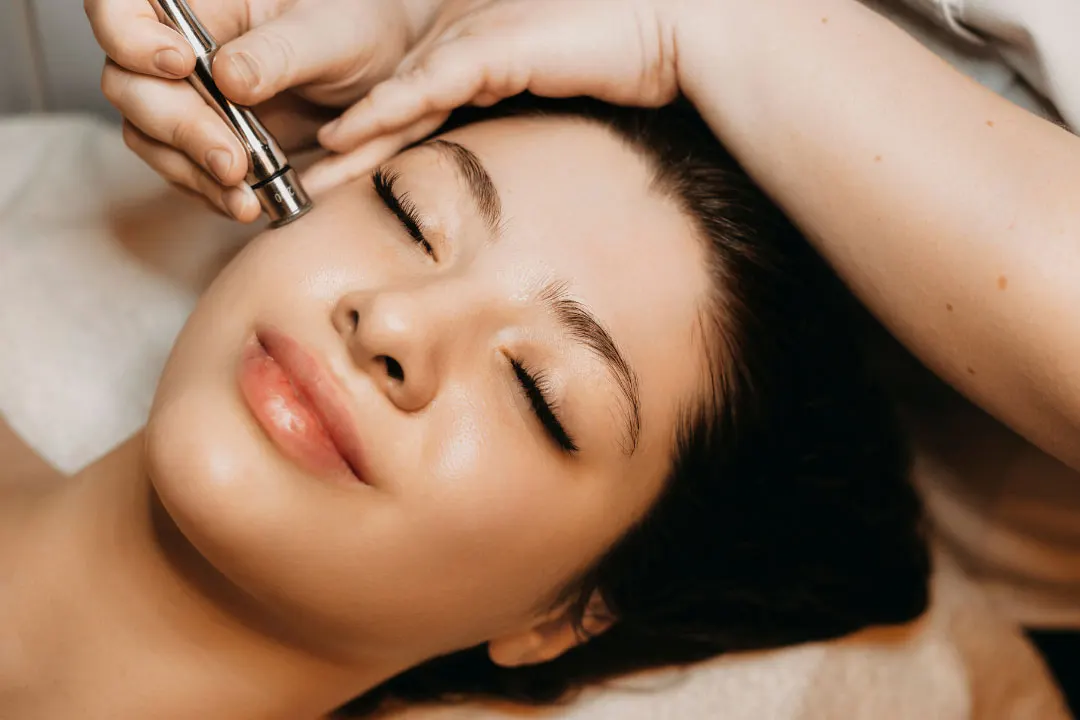A microneedling pen is a cosmetic treatment that uses tiny needles to create controlled micro-injuries to the skin. Also known as collagen induction therapy, microneedling can improve the appearance of acne scars as it promotes collagen production, improves skin texture, and increases the absorption of topical treatments.
Some acne scars and dark spots just don’t seem to fade, no matter what products you use or how long you wait. Microneedling is an emerging treatment method that involves using a pen of tiny needles to make microscopic pricks in the skin. This triggers a process called dermal remodeling: the needles cause inflammation, which prompts the skin to produce collagen — fibers that keep the skin tight and smooth.
Our collagen levels decline as we age, creating the skin conditions that many adults regularly deal with, like wrinkles, stretch marks, and scars. If you’ve got stubborn acne scars, a microneedling pen might be the answer. Keep reading to see if a microneedling pen might be for you.
You May Also Like:
The Skinny On Healthy Skin Care
The Best Supplements for Glowing Skin: 5 Top Brands Reviewed
A microneedling pen is effective
Several studies suggest that a microneedling pen can be an effective way to combat scars from any source, acne or otherwise. One study found that microneedling improved the scars of all the patients by at least 50 percent after two to three sessions. Around 65 percent of patients saw a 75 percent improvement in the appearance of their scars.
Another research review discusses the various uses available for microneedling, from treating hair loss to localized areas of disease to enhancing the drug delivery systems used to treat skin conditions. Since microneedling pens are effective and minimally invasive, dermatologists are continuing to research this tool to determine its potential uses.

A microneedling pen is minimally invasive
“Minimally invasive” is a term often used to describe microneedling. What this means is that the process of microneedling is just what the name says: small needles that prick the skin. That’s the entire process. Most doctors do apply an anesthetic cream to the affected areas, preventing any pain during the session.
That being said, mild side effects still occur, most commonly redness and skin irritation. In general, health professionals consider a microneedling pen to be safe, although risks can still occur. Other potential side effects include swelling, discomfort, bruising, dryness, and flakiness. These effects can last from a few days to a week after treatment. People can wear makeup after the procedure but should avoid the sun until the skin heals.
For people of color, dermatologists favor a microneedling pen over other scar treatments, like laser resurfacing, because it doesn’t apply heat to the skin. Darker skin is more susceptible to pigment changes as a post-inflammatory response, like acne. People who experience hyperpigmentation and melasma — dark spots or patches of skin, causing an uneven skin tone — can use microneedling without fear of worsening their pigmentation.
There are other forms of microneedling, but not much research exists on their effectiveness. There is radiofrequency microneedling, which uses heat to improve collagen production. The American Academy of Dermatology suggests that this approach is still safe for darker skin tones. Another method involves applying platelet-rich plasma (PRP) during the needling to make the process more effective.


A microneedling pen offers fast, lasting results
After one session of microneedling, your skin may look plump and luminous, but this effect will fade as your skin heals from the stimulation. It may take a few weeks to see any lasting improvement in your scars — this is because a microneedling pen focuses on stimulating collagen production. As the skin starts to produce collagen more frequently, the scars will begin to fade. It can take three to six months to see a definite change.
For maximum results, a dermatologist might recommend doing multiple microneedling pen sessions. In one study, researchers measured improvement after two to three sessions, but a doctor may recommend four to six sessions.


A microneedling pen is convenient
For people who have every minute of their day scheduled, it can be hard to carve out time for skin care. A microneedling session at the dermatologist is usually less than two hours. A majority of the session is spent waiting for the anesthetic to numb the given area, which can take from 45 minutes to an hour. The actual microneedling process is, on average, 30 minutes.
As mentioned previously, the little-to-no recovery time makes microneedling an attractive option. In addition, it’s not a procedure you have to go in for. Do-it-yourself microneedling pens exist, and home treatments offer more flexibility. However, some DIY pens don’t penetrate the skin as deeply.
A microneedling pen is the cheaper option
Skin care and rejuvenation rarely come cheap. Laser treatments are available, but they usually cost thousands of dollars and have harmful side effects. Some people try Botox, which typically costs around $300 to $500 and only lasts for three to four months.
Microneedling facial treatments typically cost less, but a session can still cost anywhere from $200 to $700. At-home treatments are much less expensive, with microneedling pens available for $100 to $300. For example, BANISH is selling their starter kit for just under $200 currently, and it contains enough product for two to three months’ worth of treatment. This kit is designed to “prevent and combat hyperpigmentation, breakouts, and acne scars,” and it has received hundreds of positive reviews that testify to its quality.
BANISH was founded in 2013 by Daisy Jing, who struggled with her acne for years. After trying microneedling, the rest was history. Jing developed her own skincare products, choosing the company name as a symbol of destroying the stigma behind acne scars and uneven skin.
“My mission for BANISH is to create a safe, affordable, and accessible treatment for those suffering with acne scars,” Jing says. “Acne and acne scars can truly be debilitating to one’s confidence; I would like to give power back to anyone who has had acne scars and make them feel like their best selves.”


A microneedling pen may benefit you
Acne scars are at best annoying and at worst debilitating to one’s confidence. No one treatment works for everyone, but microneedling pens can effectively address your scars without forcing you to compromise your time or health. You probably want to do more research before puncturing your face with needles — you can get started below — but at the very least, a microneedling pen is worth checking out.
Further reading:
Elle: Everything You’ve Ever Wanted to Know About Microneedling
Healthline: Microneedling: Collagen Induction Therapy
Yale Medicine: Microneedling
American Academy of Dermatology Association: Microneedling can fade scars, uneven skin tone, and more
Cleveland Clinic: Microneedling
Important Note: The information contained in this article is for general informational purposes only, and should not be construed as health or medical advice, nor is it intended to diagnose, prevent, treat, or cure any disease or health condition. Before embarking on any diet, fitness regimen, or program of nutritional supplementation, it is advisable to consult your healthcare professional in order to determine its safety and probable efficacy in terms of your individual state of health.
Regarding Nutritional Supplements Or Other Non-Prescription Health Products: If any nutritional supplements or other non-prescription health products are mentioned in the foregoing article, any claims or statements made about them have not been evaluated by the U.S. Food and Drug Administration, and such nutritional supplements or other health products are not intended to diagnose, treat, cure, or prevent any disease.
Table of Contents


